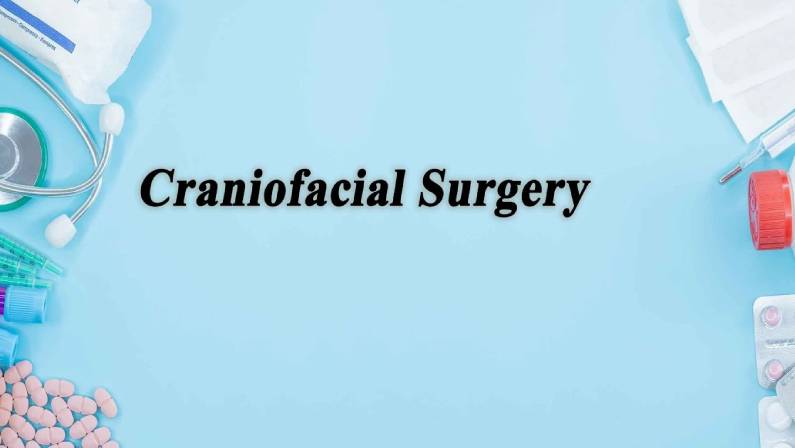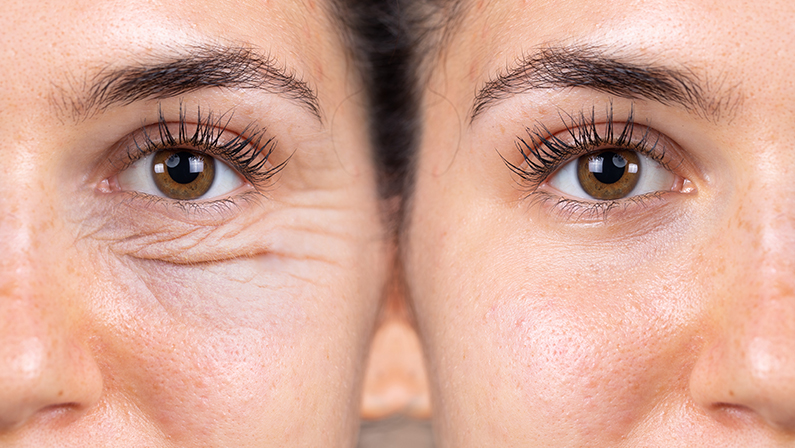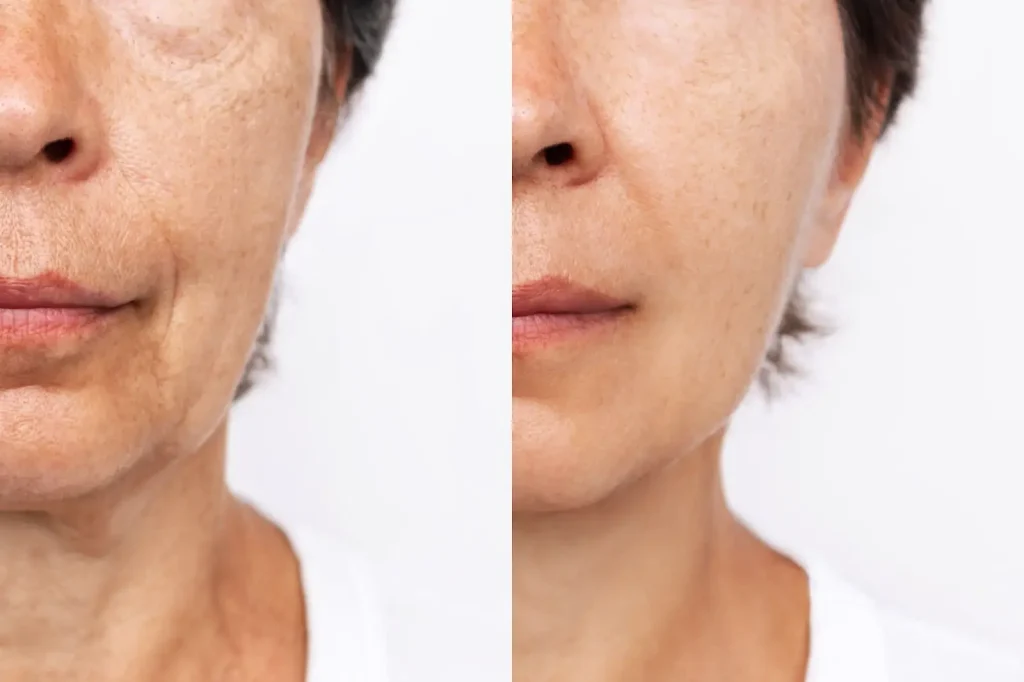Craniofacial surgery is a specialized field that has revolutionized the lives of countless individuals suffering from facial and skull deformities.
This remarkable discipline not only improves patients’ physical appearance but also significantly enhances their quality of life.
In this blog, we will delve into the world of craniofacial surgery, exploring its benefits, role, and the process involved in transforming lives. We will also shed light on what precisely craniofacial surgery entails and how it has become a beacon of hope for many.
What is Craniofacial Surgery?
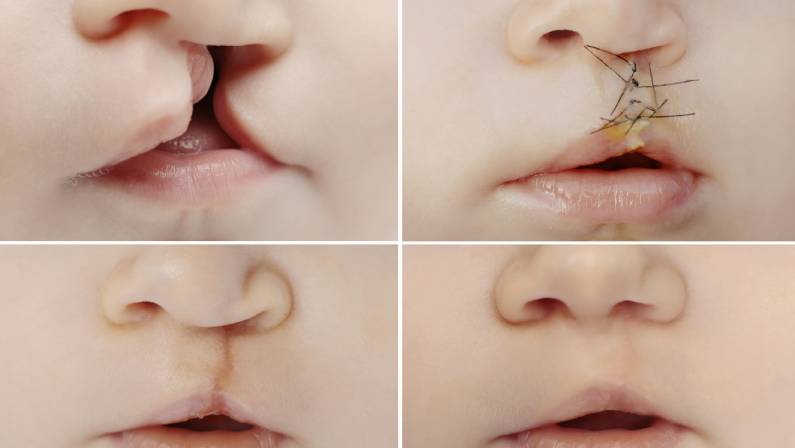 Craniofacial surgery is a subspecialty of plastic surgery that focuses on correcting and reconstructing congenital or acquired deformities affecting the skull, face, and jaws.
Craniofacial surgery is a subspecialty of plastic surgery that focuses on correcting and reconstructing congenital or acquired deformities affecting the skull, face, and jaws.
This intricate field combines the expertise of various medical professionals, including plastic surgeons, neurosurgeons, oral and maxillofacial surgeons, and otolaryngologists.
Together, they work to address a wide range of conditions, such as craniosynostosis, cleft lip and palate, facial trauma, and tumors, among others.
By employing advanced surgical techniques and a comprehensive understanding of the complex craniofacial anatomy, surgeons can effectively restore both form and function to patients, dramatically improving their lives.
What are Some of the Common Conditions Treated by Craniofacial Surgery?
Craniofacial surgery addresses many conditions, with patients ranging from infants to adults. These conditions can be broadly categorized into congenital craniofacial anomalies present at birth and acquired craniofacial conditions that develop later in life.
In this section, we will explore some of the most common conditions that craniofacial surgery aims to treat, along with the impact it has on patients’ lives.
Congenital Craniofacial Anomalies
Congenital craniofacial anomalies are birth defects that affect the structure and appearance of the face and skull.
These conditions can significantly impact a person’s quality of life, making it essential to address them through specialized surgical intervention.
Some of the most common congenital craniofacial anomalies include:
- Cleft Lip and Palate: A cleft lip and palate occur when the tissues of the lip and/or palate do not fuse properly during fetal development, resulting in a gap or split. This can lead to difficulties with eating, speaking, and even breathing. Craniofacial surgery can repair the cleft, significantly improving the patient’s appearance and function.
- Craniosynostosis: This condition occurs when one or more of the fibrous joints (sutures) between the bones of a baby’s skull close prematurely, causing abnormal head shape and potential developmental issues. Craniofacial surgery can correct the skull shape and allow for normal brain growth.
- Facial Microsomia: Facial microsomia is a congenital condition characterized by the underdevelopment of one side of the face, affecting the lower jaw, cheekbones, and ears. Craniofacial surgery can help reconstruct the affected facial structures, restoring symmetry and function.
Acquired Craniofacial Conditions
Acquired craniofacial conditions are those that develop later in life, often as a result of trauma, disease, or other factors. These conditions can be just as debilitating as congenital anomalies, making it crucial to address them through appropriate surgical intervention.
Some common acquired craniofacial conditions include:
- Facial Trauma: Injuries to the face, such as fractures or lacerations, can cause significant deformities and functional issues. Craniofacial surgery can repair the damage and restore the patient’s appearance and function.
- Tumors and Facial Deformities: Abnormal growths, such as benign or malignant tumors, can cause facial deformities and functional problems. Craniofacial surgery can remove the tumor and reconstruct the affected area, improving both appearance and function.
- Maxillofacial Reconstruction: This refers to the surgical reconstruction of the facial bones, particularly the upper and lower jaws. Maxillofacial reconstruction is often necessary following trauma, tumor removal, or congenital defects and can greatly enhance a patient’s quality of life by restoring proper facial structure and function.
Benefits and Potential Risks of Craniofacial Surgery
 Craniofacial surgery offers a multitude of benefits to patients, including improved functionality, aesthetics, and overall quality of life.
Craniofacial surgery offers a multitude of benefits to patients, including improved functionality, aesthetics, and overall quality of life.
However, as with any surgical procedure, there are potential risks and complications that must be considered.
Improved Functionality and Aesthetics
One of the primary benefits of craniofacial surgery is the improvement in patient functionality and aesthetics. By addressing deformities and abnormalities in the face and skull, surgeons can restore proper function to vital structures such as the mouth, nose, and eyes.
Additionally, these procedures can significantly enhance a patient’s appearance, leading to increased self-esteem and confidence.
Enhancing Quality of Life for Patients
Craniofacial plastic surgery can profoundly impact a patient’s quality of life. By addressing issues that may cause physical discomfort, difficulty with speech, or challenges with eating and breathing, these procedures can greatly enhance a patient’s day-to-day experience.
Furthermore, the improvement in appearance can lead to increased social acceptance and emotional well-being.
Risks and Complications Associated with Craniofacial Procedures
As with any surgical procedure, craniofacial surgery carries certain risks and potential complications. These may include infection, bleeding, scarring, anesthesia-related complications, and the need for additional surgeries.
Patients need to discuss these risks with their surgeons and weigh them against the potential benefits of the procedure. In many cases, the benefits of craniofacial surgery far outweigh the potential risks, making it a valuable option for those in need.
Long-term Outcomes and Follow-up Care
The long-term outcomes of craniofacial surgery are generally positive, with many patients experiencing significant improvements in both function and appearance.
However, it is crucial for patients to continue with regular follow-up care to monitor their progress and address any potential issues that may arise. This may include additional surgeries, orthodontic treatment, or speech therapy, depending on the patient’s specific needs.
The Role of a Craniofacial Surgeon
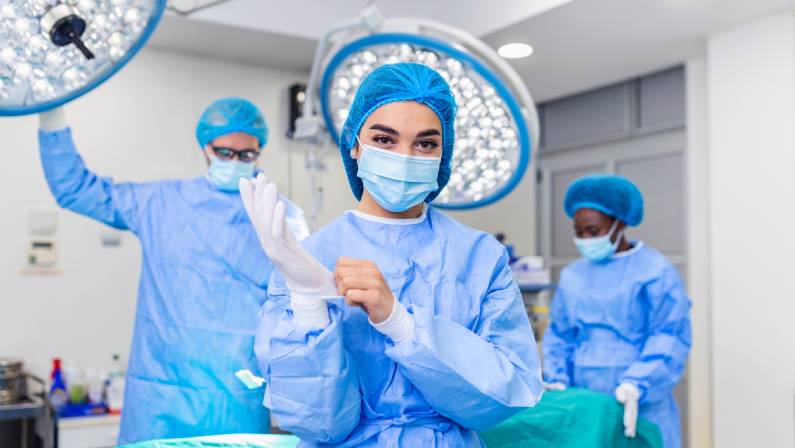 Craniofacial doctors play a vital role in the lives of patients with facial and skull deformities, as they possess the specialized skills and knowledge required to address these complex conditions.
Craniofacial doctors play a vital role in the lives of patients with facial and skull deformities, as they possess the specialized skills and knowledge required to address these complex conditions.
Their expertise extends beyond surgical techniques, as they also collaborate with other medical specialists and provide emotional support to patients and their families.
Training and Specialization
Craniofacial surgeons undergo extensive training and specialization to develop the skills necessary to perform complex reconstructive procedures.
This typically involves completing a general surgery residency, a plastic surgery residency and a craniofacial surgery fellowship. During this time, surgeons gain experience in various surgical techniques, learn to manage complications and develop a deep understanding of the intricate anatomy of the face and skull.
Collaboration with Other Medical Specialists
Treating craniofacial conditions often requires a multidisciplinary approach involving collaboration with other medical specialists. By working together, the team can develop a comprehensive treatment plan that addresses all aspects of a patient’s condition, ensuring the best possible outcomes.
Importance of Experience and Skill in Craniofacial Reconstruction
The success of craniofacial surgery for adults heavily depends on the surgeon’s experience and skill. As these procedures are often highly complex, the surgeon must possess a thorough understanding of the intricacies of craniofacial anatomy and the ability to perform delicate surgical techniques.
Patients should seek out a surgeon with a proven track record of successful outcomes in craniofacial reconstruction to ensure they receive the best possible care.
Emotional Support and Communication with Patients and Families
Beyond their surgical expertise, craniofacial surgeons also play a critical role in providing emotional support and clear communication to patients and their families. Undergoing craniofacial surgery can be a challenging and emotional experience, making it essential for the surgeon to establish a strong rapport with the patient and their loved ones.
By providing information, answering questions, and addressing concerns, the surgeon can help alleviate anxiety and ensure that the patient and their family feel supported throughout the entire process.
How Are Conditions Such as Craniosynostosis Diagnosed?
 Craniosynostosis is a congenital condition characterized by the premature fusion of one or more sutures (fibrous joints) between the bones of a baby’s skull. This can lead to an abnormal head shape and potential developmental issues. Early diagnosis and intervention are crucial for optimal outcomes.
Craniosynostosis is a congenital condition characterized by the premature fusion of one or more sutures (fibrous joints) between the bones of a baby’s skull. This can lead to an abnormal head shape and potential developmental issues. Early diagnosis and intervention are crucial for optimal outcomes.
In this section, we will discuss the various methods used to diagnose craniosynostosis.
Physical Examination
The first step in diagnosing craniosynostosis is a thorough physical examination of the infant’s head. A pediatrician or craniofacial specialist will assess the shape of the skull, looking for any signs of abnormal growth or asymmetry.
They will also palpate the sutures to determine if they are open or closed, as well as evaluate the fontanelles (soft spots) on the baby’s head. In some cases, the abnormal head shape may be noticeable at birth, while in others, it may become more apparent as the infant grows.
Medical History
A detailed medical history can provide valuable information about potential risk factors for craniosynostosis, such as family history, maternal medication use during pregnancy, or any complications during pregnancy or delivery. This information can help the healthcare provider determine if further evaluation is necessary.
Imaging Studies
If the physical examination and medical history suggest the possibility of craniosynostosis, imaging studies may be ordered to confirm the diagnosis.
The most common imaging technique is a cranial X-ray, which can show the fused sutures and provide information about the overall skull structure. In some cases, a computed tomography (CT) scan may be used to obtain a more detailed view of the skull and sutures, mainly if surgery is being considered.
Genetic Testing
In some instances, genetic testing may be recommended to determine if the craniosynostosis is part of a genetic syndrome or if there is an increased risk of the condition occurring in future pregnancies. This information can be helpful for both treatment planning and family planning purposes.
The Craniofacial Surgical Process
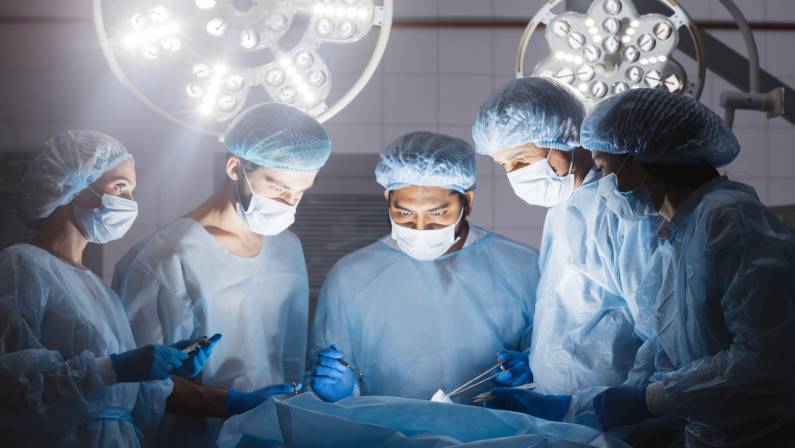 The craniofacial surgical process is a complex and multidisciplinary approach to treating various facial and skull deformities. It involves a series of steps, from comprehensive evaluation and diagnosis to postoperative care and rehabilitation.
The craniofacial surgical process is a complex and multidisciplinary approach to treating various facial and skull deformities. It involves a series of steps, from comprehensive evaluation and diagnosis to postoperative care and rehabilitation.
This section will discuss each stage of the craniofacial surgical process in detail.
Comprehensive Evaluation and Diagnosis
The first step in the craniofacial surgical process is a thorough evaluation and diagnosis of the patient’s condition. This typically involves a physical examination, medical history review, and various imaging studies (such as X-rays or CT scans) to assess the extent of the deformity and determine the most appropriate treatment plan.
Multidisciplinary Team Approach
Craniofacial surgery often requires the collaboration of a multidisciplinary team of specialists, including craniofacial surgeons, neurosurgeons, oral and maxillofacial surgeons, otolaryngologists, orthodontists, and other healthcare professionals. This team collaborates to develop a comprehensive treatment plan that addresses all aspects of the patient’s condition and ensures the best possible outcomes.
Preoperative Planning and Imaging Techniques
Before surgery, the craniofacial team will engage in extensive preoperative planning, which may involve using advanced imaging techniques such as 3D reconstruction and virtual surgical planning. These tools allow the team to visualize the patient’s anatomy, plan the surgical approach, and anticipate potential challenges or complications.
Surgical Techniques and Procedures
Craniofacial surgery encompasses a wide range of techniques and procedures, depending on the patient’s specific needs.
Some common approaches include:
- Bone Grafting and Osteotomies: These procedures involve removing, reshaping, or replacing bone to correct deformities and improve the overall structure of the face and skull.
- Soft Tissue Reconstruction: This approach focuses on repairing or reconstructing the soft tissues of the face, such as skin, muscles, and nerves, to improve function and aesthetics.
- Facial Prosthetics and Implants: In some cases, facial prosthetics or implants may be necessary to restore the appearance and function of the face, particularly in cases involving significant tissue loss or damage.
Postoperative Care and Rehabilitation
Patients will receive postoperative care and rehabilitation tailored to their specific needs after surgery. This may include pain management, wound care, physical therapy, speech therapy, and orthodontic treatment, among other interventions. The goal of postoperative care is to support the patient’s recovery, promote healing, and optimize functional and aesthetic outcomes.
How Long Does Craniofacial Surgery Take?
The duration of craniofacial surgery can vary widely depending on the complexity of the procedure, the specific condition being treated, and the individual patient’s needs.
In general, craniofacial surgeries can range from a few hours to several hours or even a full day. Some cases may require multiple surgical procedures performed in stages over an extended period.
It is essential for patients and their families to discuss the expected duration of the surgery with their craniofacial surgeon to better understand the timeline and plan accordingly.
What is the Recovery Process Like After Craniofacial Surgery?
The recovery process following craniofacial surgery can also vary greatly depending on the nature of the procedure, the patient’s age, and overall health.
Some factors that may influence the recovery process include:
- Hospital stay: Patients may need to stay in the hospital for several days to a week or more, depending on the complexity of the surgery and their recovery progress.
- Pain management: Pain and discomfort are common after craniofacial surgery. The medical team will closely monitor the patient and provide appropriate pain relief medications to ensure their comfort.
- Swelling and bruising: Swelling and bruising are expected after craniofacial surgery, and they may take several weeks to subside. The use of ice packs and keeping the head elevated can help minimize swelling.
- Wound care: Proper wound care is essential to promote healing and prevent infection. The medical team will provide instructions on how to clean and care for the surgical site.
- Follow-up appointments: Regular follow-up appointments with the craniofacial surgeon and other healthcare professionals are crucial to monitor the patient’s progress, address any concerns, and adjust the treatment plan as needed.
- Rehabilitation: Depending on the specific procedure, patients may require physical therapy, speech therapy, or other rehabilitation services to support their recovery and improve function.
- Hospital stay: Patients may need to stay in the hospital for several days to a week or more, depending on the complexity of the surgery and their recovery progress.
- Pain management: Pain and discomfort are common after craniofacial surgery. The medical team will closely monitor the patient and provide appropriate pain relief medications to ensure their comfort.
- Swelling and bruising: Swelling and bruising are expected after craniofacial surgery, and they may take several weeks to subside. The use of ice packs and keeping the head elevated can help minimize swelling.
- Wound care: Proper wound care is essential to promote healing and prevent infection. The medical team will provide instructions on how to clean and care for the surgical site.
- Follow-up appointments: Regular follow-up appointments with the craniofacial surgeon and other healthcare professionals are crucial to monitor the patient’s progress, address any concerns, and adjust the treatment plan as needed.
- Rehabilitation: Depending on the specific procedure, patients may require physical therapy, speech therapy, or other rehabilitation services to support their recovery and improve function.
How is the Patient Monitored After Craniofacial Surgery?
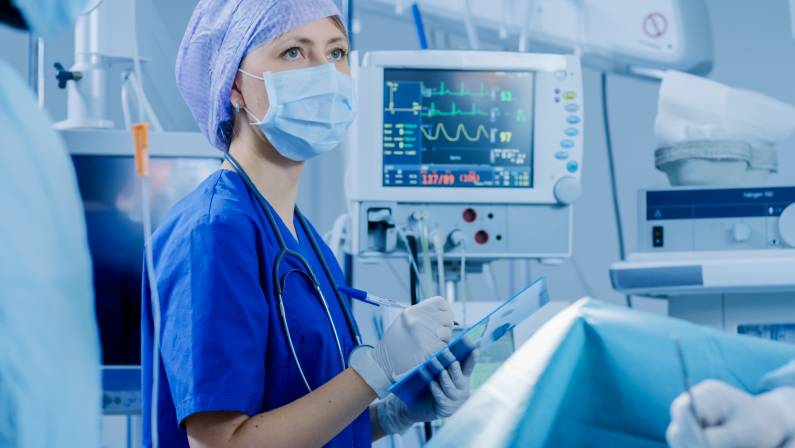 After craniofacial surgery, the patient’s progress and recovery are closely monitored by the craniofacial team and other healthcare professionals.
After craniofacial surgery, the patient’s progress and recovery are closely monitored by the craniofacial team and other healthcare professionals.
This may include:
- Vital signs monitoring: The patient’s vital signs, such as heart rate, blood pressure, and oxygen levels, will be closely monitored in the immediate postoperative period to ensure their stability.
- Neurological assessments: Depending on the nature of the surgery, the medical team may perform neurological regular evaluations to evaluate the patient’s sensory and motor function and detect any potential complications.
- Imaging studies: Postoperative imaging studies, such as X-rays or CT scans, may be performed to assess the success of the surgery and monitor the healing process.
- Follow-up appointments: Regular follow-up appointments with the craniofacial surgeon and other specialists are essential to track the patient’s progress, discuss any concerns, and adjust the treatment plan as needed.
Are there Non-surgical Alternatives for Craniofacial Conditions?
While surgery is often the primary treatment for many craniofacial conditions, non-surgical alternatives or adjunctive therapies may be available depending on the specific situation and its severity.
Some non-surgical treatment options may include:
- Orthodontic treatment: In cases of mild to moderate craniofacial deformities, orthodontic treatment may correct misaligned teeth and improve facial appearance.
- Cranial orthoses (helmets): For infants with certain types of craniosynostosis or positional plagiocephaly, custom-fitted helmets may be used to help reshape the skull as the baby grows.
- Observation and monitoring: In some cases, especially when the condition is mild, the craniofacial team may recommend observation and monitoring without immediate intervention. This approach allows the team to assess the progression of the condition and determine if and when treatment becomes necessary.
- Physical and occupational therapy: For patients with functional impairments related to their craniofacial condition, physical and occupational therapy can help improve strength, mobility, and overall function.
It is essential to discuss all available treatment options with a qualified craniofacial specialist to determine the most appropriate approach for each individual case.
How Can I Find a Qualified Craniofacial Surgeon?
Finding a qualified craniofacial surgeon is crucial to ensure the best possible outcomes.
Here are some tips to help you find the right specialist:
- Referrals: Ask your primary care physician, pediatrician, or dentist for a referral to a reputable craniofacial surgeon or craniofacial center.
- Professional organizations: Search for a craniofacial surgeon through professional organizations such as the American Society of Craniofacial Surgeons or the American Society of Plastic Surgeons.
- Research online: Look for patient reviews and testimonials, as well as information about the surgeon’s training, experience, and areas of expertise.
- Schedule consultations: Meet with potential surgeons to discuss your case, ask questions, and understand their approach and bedside manner.
- Verify credentials: Ensure the surgeon is board-certified and has experience treating patients with similar craniofacial conditions.
Does Insurance Cover the Cost of Craniofacial Surgery?
Insurance coverage for craniofacial surgery can vary depending on the specific procedure, the patient’s insurance plan, and whether the surgery is deemed medically necessary.
In many cases, insurance companies will cover the cost of craniofacial surgery if it is required to treat a congenital deformity, improve function, or address a medical issue, such as breathing difficulties or vision problems.
It is essential to consult with your insurance provider to determine the extent of your coverage and any out-of-pocket expenses you may be responsible for.
Transforming Lives
The role of a craniofacial surgeon extends far beyond the operating room. Their specialized training, collaboration with other medical specialists, experience, skill in craniofacial reconstruction, and ability to provide clear communication make them invaluable partners in the journey towards improved quality of life.
Dr. Bret Johnson acknowledges the transformative role of surgeons and has made it his mission to give confidence and support to his patients in Dallas and Plano, Texas.
By understanding the potential risks and long-term outcomes, patients can make informed decisions about their treatment and work closely with their healthcare team to achieve the best possible results.

